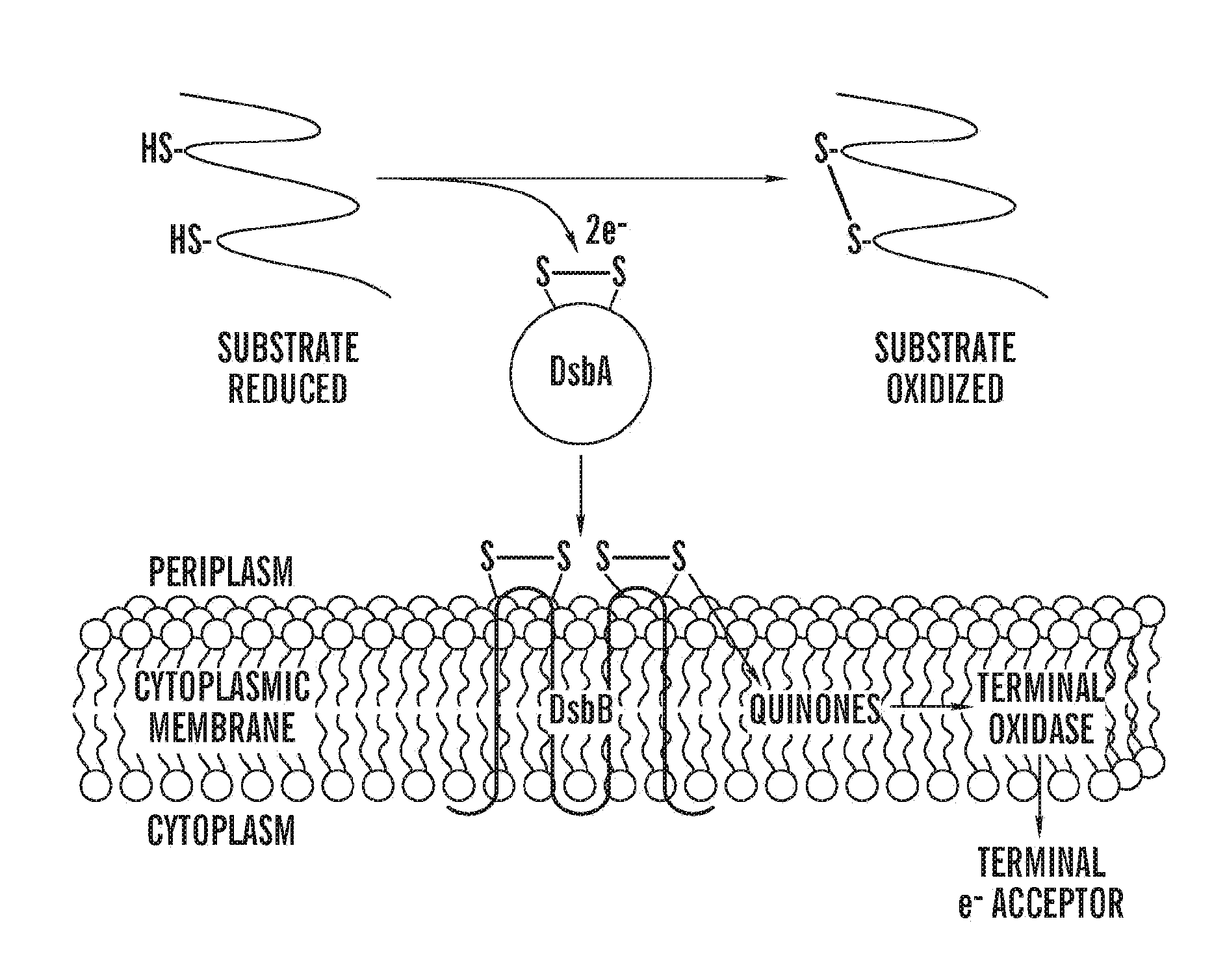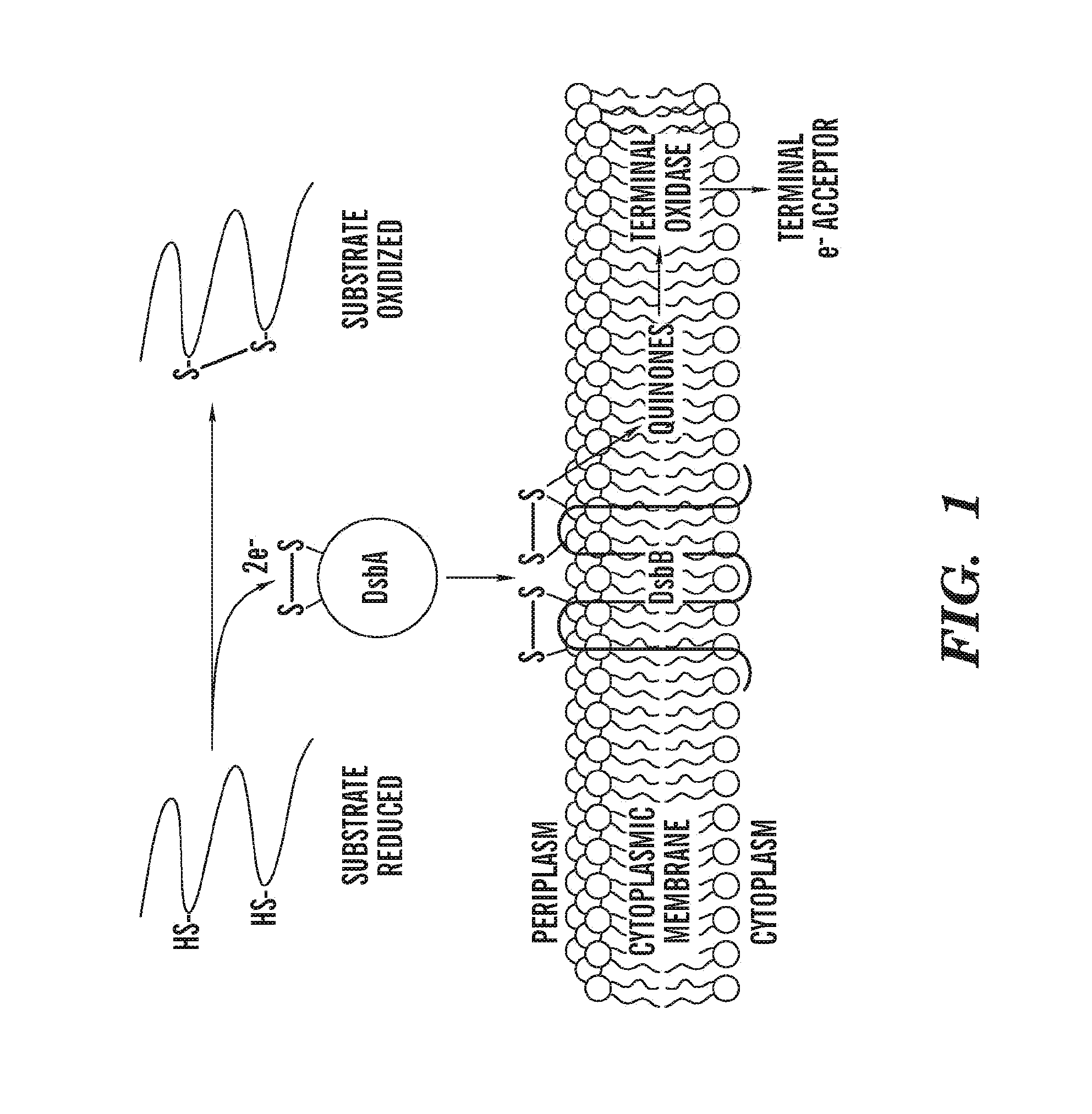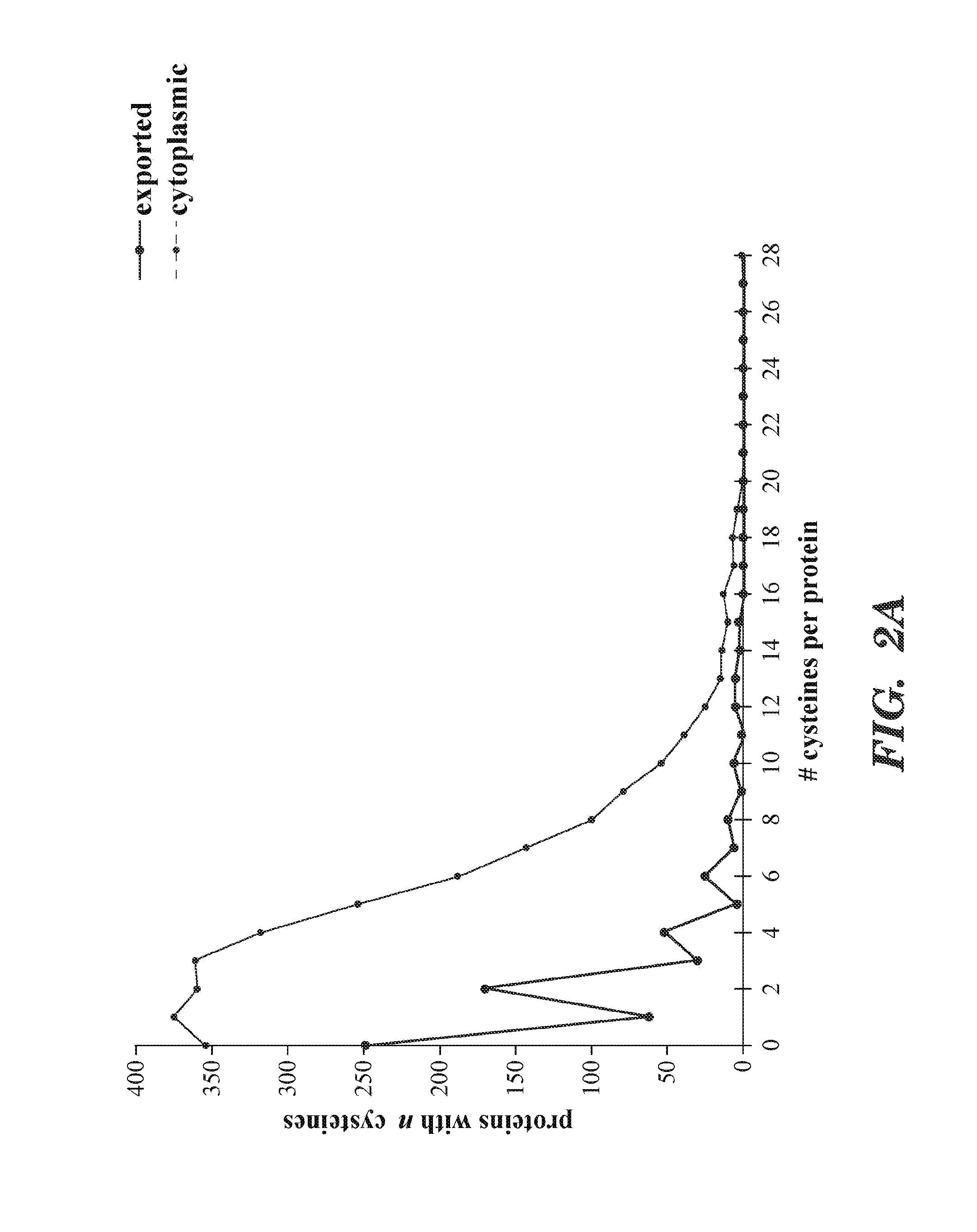Antimicrobial agents that target bacterial vkor
a technology of antibacterial agents and anticoagulation agents, which is applied in the direction of biological material analysis, drug compositions, dna/rna fragmentation, etc., can solve the problems of huge public health problems such as the spread of multiple drug resistant microbial pathogens, i>m. tuberculosis/i>, and inhibit the formation of disulfide bonds. , to achieve the effect of inhibiting the formation of disulfide bonds, inhibiting
- Summary
- Abstract
- Description
- Claims
- Application Information
AI Technical Summary
Benefits of technology
Problems solved by technology
Method used
Image
Examples
example 1
Introduction
[0123]Disulfide bonds, formed by the oxidation of pairs of cysteines, assist folding and stability of many exported proteins. In Escherichia coli, the periplasmic protein DsbA and the membrane-bound protein DsbB promote the introduction of disulfide bonds into proteins (FIG. 1)(1). DsbA, with the active site motif, Cys-X-X-Cys, embedded in a thioredoxin fold, introduces disulfide bonds into proteins that are translocated into the periplasm (2, 3). The active site cysteines of DsbA must be reoxidized for the enzyme to regain activity, a step catalyzed by DsbB(4). DsbB then shuttles electrons received from DsbA to the electron transport chain via membrane-bound quinones (5, 6).
[0124]Oxidative protein folding has been studied extensively only in a small fraction of bacterial species. Given the considerable biological diversity within the domain Bacteria, a more extensive analysis of this group of organisms may reveal novel aspects of disulfide bond formation. The availabili...
example 2
[0214]Two significant health problems were appraoched: 1) the increasing antibiotic resistance of tuberculosis; 2) the need for constant monitoring of patients taking the anticoagulant warfarin (Coumadin). These problems were connected by the discovery that the tuberculosis bacterium, Mycobacterium tuberculosis, makes a protein, essential for growth, closely related to the target of warfarin in humans, VKOR. The tuberculosis VKOR helps proteins to fold by promoting the formation of an important chemical bond—the disulfide bond. Sensitive assay systems were developed for the identification and development of inhibitors of VKOR as it was found that tuberculosis VKOR also works in another bacterium, Escherichia coli, in which it is not essential for growth. Warfarin has been shown to inhibit the tuberculosis VKOR activity in E. coli, thereby validating our assay system. Human VKOR in E. coli will be similarly used in the E. coli assay system to help to further identify inhibitors of ba...
PUM
| Property | Measurement | Unit |
|---|---|---|
| β- | aaaaa | aaaaa |
| alkaline phosphatase assay | aaaaa | aaaaa |
| stability | aaaaa | aaaaa |
Abstract
Description
Claims
Application Information
 Login to View More
Login to View More - R&D
- Intellectual Property
- Life Sciences
- Materials
- Tech Scout
- Unparalleled Data Quality
- Higher Quality Content
- 60% Fewer Hallucinations
Browse by: Latest US Patents, China's latest patents, Technical Efficacy Thesaurus, Application Domain, Technology Topic, Popular Technical Reports.
© 2025 PatSnap. All rights reserved.Legal|Privacy policy|Modern Slavery Act Transparency Statement|Sitemap|About US| Contact US: help@patsnap.com



